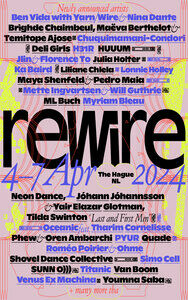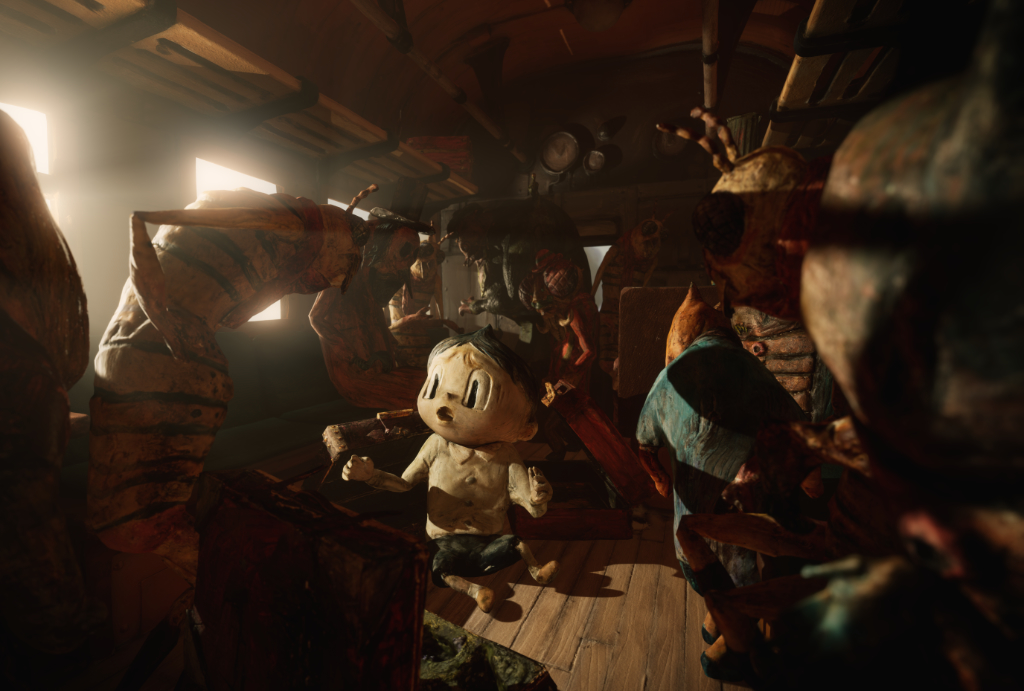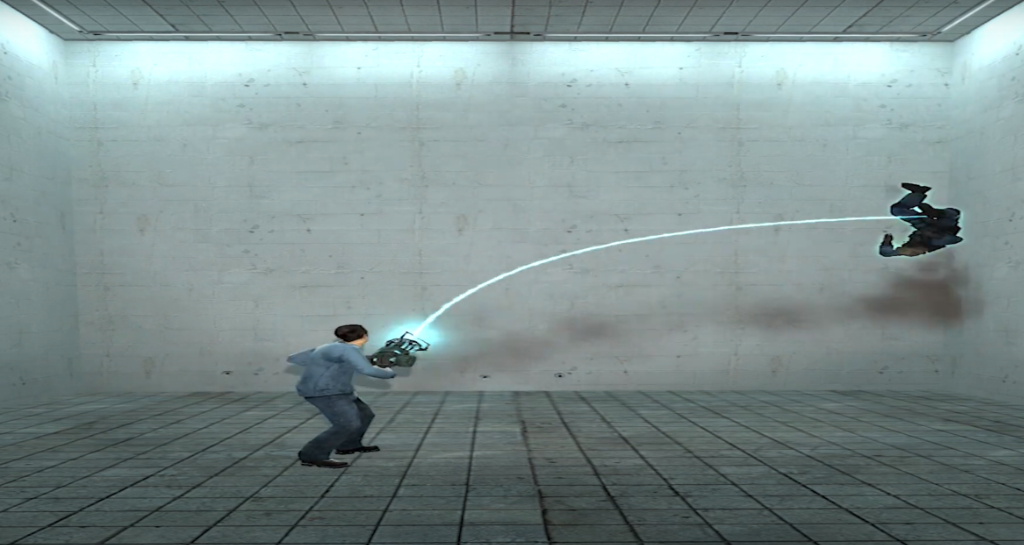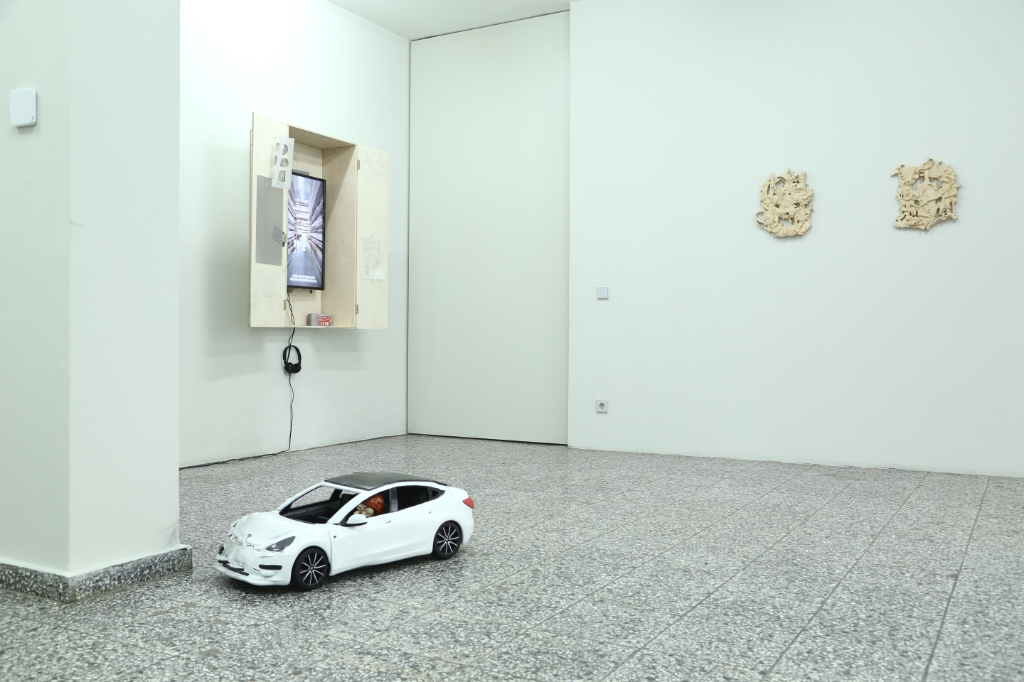Interview by Polly Bindman
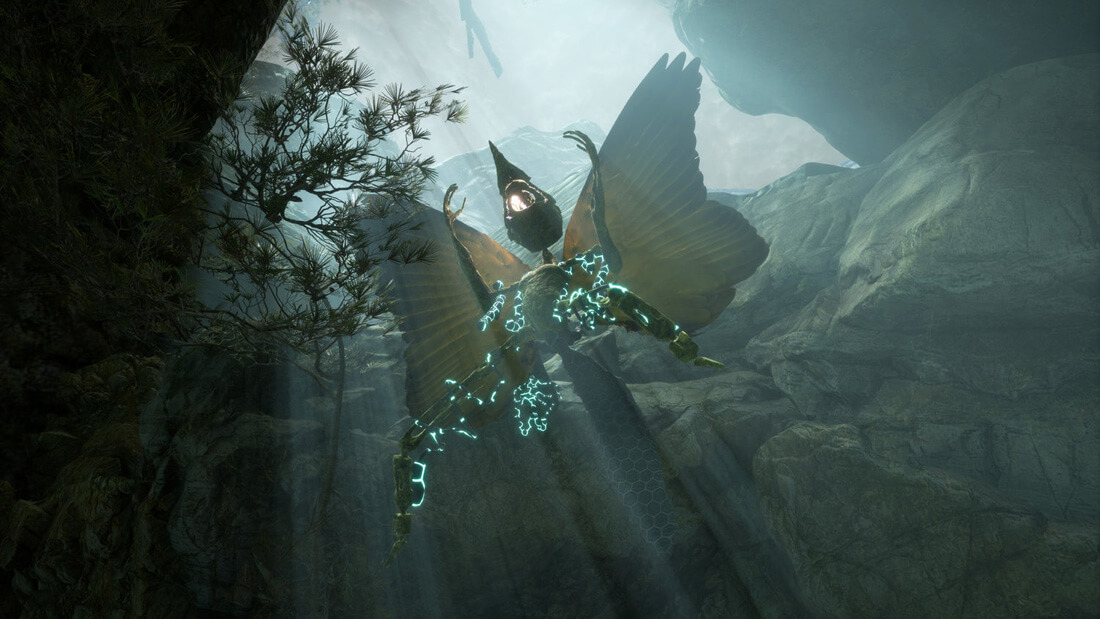
Jakob Kudsk Steensen is a Danish artist and art director based in New York; currently, he is shortlisted for the Future Generation Art Prize, which will host its exhibition this March in Kyiv. Jakob communicates his vision using VR, a technology that metaphysically transports the audience into another world. This presents Jakob with the unusual challenge of engaging with multiple spaces – the physical spaces of the gallery itself but also the world within the headset.
He rises to this challenge exceptionally, and the worlds that he creates appear overwhelmingly complex as he invites his audience to experience a sensory insight into another visible space, as well as the less tangible psychological space of the artist’s imagination. The challenge of constructing visual spaces that adapt according to the will of the individual has been long-since tackled by video game producers – and Jakob’s background in gaming undoubtedly aids his process. Yet his current work is particularly innovative because it approaches VR through the lens of an artist, perceiving it as not only functional but also as a poetic medium.
Jakob’s approach is interdisciplinary, working at the intersection between psychology, art, science and technology. Using a process of collecting organic material on excursions to various habitats, he then digitalises this data using 3D scanners, photogrammetry, satellite data and computer game software. His latest project, RE-ANIMATED, is similarly rooted in the organic. Its narrative centres on the extinction of the Kaua’i ʻōʻō bird, which Jakob majestically re-animates.
Performing the role of a digital gardener, Jakob digitally reconstructs the landscape of the Hawaiian island of Kaua’i. The piece is a product of extensive fieldwork to collect and 3D-scan flora and fauna, as well as collaborations with museums, interviews with ornithologists, and inspiration was taken from paintings of the now-extinct bird.
Some of Jakob’s landscapes appear bleak or dystopian, but the notion of re-animating life is inherently optimistic. Although it seems futile to try and articulate the experience of entering one of Jakob’s worlds, two-dimensional visuals suffice to give a sense of Jakob’s unique imagination, as well as the immense potential of VR technology to push visual arts to new directions.
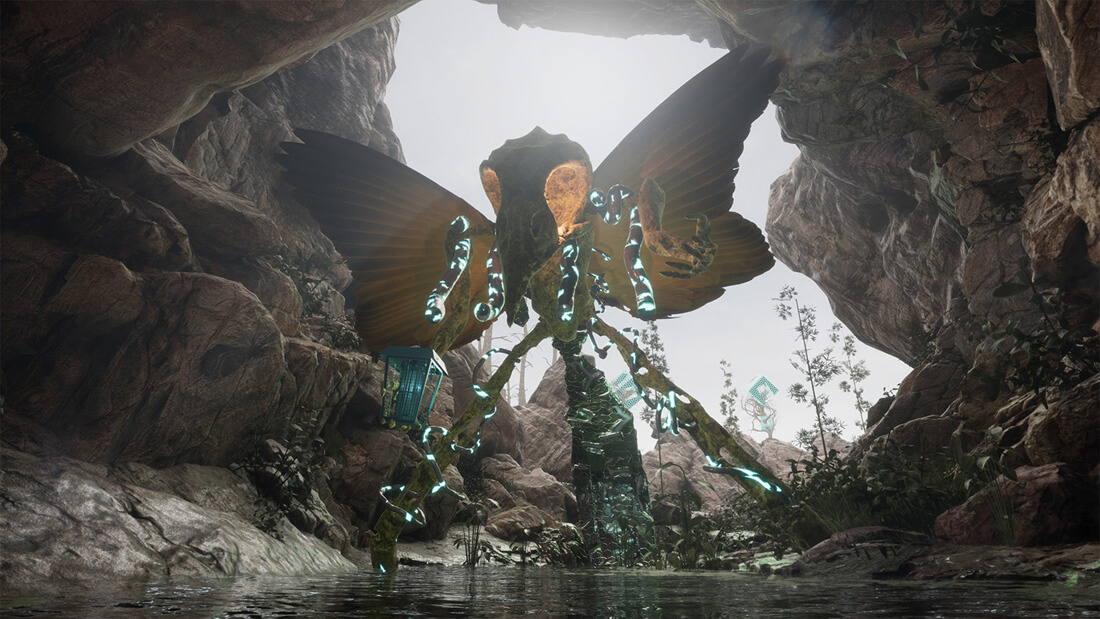
For those that are not familiar with your work, could you tell us a little bit about your background and the aims behind your practice exploring the nature of the landscape and the nature of photography which you then incorporate into virtual narratives?
I studied fine arts at Central St. Martins for a year for my master’s degree, focusing on art and science, and I combined my degree with more academic studies in art history and anthropology in Denmark. I have a mixed background, as I have worked with video game software and VR productions professionally before making a living as an artist.
The worlds I develop are made over extended periods of time. An installation might take four to twelve months to create. I organize excursions, sometimes for weeks or months at the time. I embed myself within the physical context of whatever theme, place or natural story I focus on. While embedded in a landscape, I take thousands of photographs, which allows me to create virtual replications of real locations. I also use satellite images, scientific data and microscope imagery. All the material is digitized, which gives me free rein to edit, morph material, and create new creatures and landscapes.
I collaborate with authors, scientists, NGOs, composers and other artists. I rarely commission anyone to produce work for me. I make most of the worlds I exhibit myself, but I invite others to inhabit them through music and narratives. Everyone is credited, and to realize my projects, I develop infrastructures which allow everyone to get paid and explore new artistic tools through technology that interests them. Most people I work with have an interest in ecology. How the work is shown is also important to me, so my work is available online, in physical exhibition spaces, in public places and at festivals.
I am interested in new ways of producing and showing work. Film festivals show immersive installations. Art museums show studio productions, and theatres develop VR. The community of artists that I am part of works with film, science, video games, concerts and performance, collaborating between fields. To me, the most interesting thing about being an artist right now is the ability to move beyond conventional artistic categories and collaborate. There are so many possibilities today for being artistic, poetic, and imaginative, and reaching audiences in public spaces, online and exhibition spaces.
I want to be part of these emerging cultural practices and ways of thinking about audience engagement. Through my practice, I create immersive spaces that people enter, and in them, they encounter poetic worlds that show new ways of perceiving and thinking about our relationships with natural environments.
You are one of the shortlisted artists for the Future Generation Art Prize (FGAP) 2019. What work are you going to present for the exhibition? Could you tell us a bit about the intellectual process behind it?
I am showing RE-ANIMATED, a virtual reality and video installation that merges exhibition spaces with a digital landscape. The work explores how to overcome loss and embrace the emergence of new worlds emerging from things which disappear and decay. RE-ANIMATED is based on the last Kaua’i ʻōʻō bird, which died in 1987, marking the extinction of its species. In 2009, its mating call – first recorded in 1975 and later digitized in an ornithology lab – was uploaded to YouTube. Since then, the song of the Kaua’i ʻōʻō calling in vain to a mate who was no longer there has been played more than half a million times. RE-ANIMATED is a response to this mating call.
For the work, I collaborated with Michael Riesman, musical director of Philip Glass Ensemble and the composer of several Oscar-nominated films. One of those is The Truman Show, a film about a virtual (real) reality. We have spoken for a few years about working together, so for RE-ANIMATED, he created an algorithmic music system that produced a mourning composition that continuously evolves. It is never the same.
The contrast between an extinct bird, whose song lives on as digital data, and a forever evolving meditational musical composition just somehow worked. We then connected the music to fauna that I have created by using lichens, moss, plants and rocks, which I have 3D scanned. Algorithms remix the organic material into new species, which appear somewhat “real” and photorealistic but also mystical and bizarrely malformed.
The work is a 15-minute VR experience, where your breathing and the music impact the virtual landscape as you witness the Kaua’i ʻōʻō become resurrected. However, instead of illustrating how the bird looked, everything is transformed into something new. I chose to do this after talking with Britt Wray in my studio. She is a science journalist who wrote the book “Rise of the Necrofauna”.
Britt interviewed scientists globally who are engaged with bringing back to life extinct species. There are several laboratories and people doing this right now. What she personally concludes is that anything you bring back to life will become something different. It is a fantasy, a human imagination, when we think it is possible to create lost environments.
The world is forever changing, and anything resurrected will ultimately be a new creation. With RE-ANIMATED, I wanted to put my finger on that perspective and exchange it. So the work starts in a photorealistic setting, based on ornithologist Douglas Pratt’s memories of encountering the bird in 1968. I interviewed him, and he, too, told me about how painting the bird today, which he does, is his way of bringing it back to life. So in my work, the bird and its environment slowly transform into a wild new colourful reality to the music by Michael Riesman.
And what were the challenges you faced for its development?
RE-ANIMATED is my most ambitious project to date. It marks many of the things I want to develop further moving forward in terms of how I work with scientists and artists and produce work. It required me to spend more than a year on the full work. I needed to fundraise money from art foundations, pitch the exhibition to spaces, collaborate with several people, and, generally, create something that feels like it is beyond my solo artistic self.
It is my idea and emotions of overcoming the loss of something that drove the piece. But I wanted it to become something I could not imagine when I started. Managing this process is hard if you also want to pay everybody and yourself and create a sustainable creative structure for collaboration. And that is what I want to do. I want to keep making immersive installations where the audience feels welcome and where they get to genuinely feel emotionally moved and curious to learn more about the world’s animated.
For your projects, you frequently engage with scientists. What has been your experience of this artist-scientist collaboration?
I start by looking for unique natural histories and perspectives on the world that also tell stories about ourselves as humans, our emotions, and the ways we make sense of what’s around us. Right now, for example, I am speaking with Anne Pringle, a researcher in Boston, who has been writing about the symbiotic life of Lichens and how some species are technically immortal because they grow stronger and reproduce faster the older they grow.
This perspective on nature is unconventional because it challenges established evolutionary narratives. Pringle’s writings offer new ways of thinking about time, decay and worldviews other than the ones we are able to perceive as humans within our own bodies.
Through my installations, I can show those worlds and focus on progressive new narratives about the world we live in, told through actual scientific research but in highly abstract and poetic ways.
You’ve been using VR in your pieces to narrate your artistic ideas. What has this media contributed to your artistic practice? And where do you see the technology going?
I want to mention that I grew up playing and modifying video games. Navigating and building interactive 3D worlds has been part of who I am since I was a kid. I feel VR allows me to express myself freely and to show people who have never been introduced to 3D worlds how it can be used by artists. VR makes me feel I can truly express myself intuitively, whereas making a video or projection installation would still feel limiting. I keep returning to VR even though I try to tell myself the next show will be different. I am constantly attracted to it.
The real technological transformation that is going on, as I see it, is not with VR itself. VR represents an engaging, three-dimensional and sensory approach to ideas about images and what it means to tell stories or make exhibitions. You need to address the human body in space, how it moves, senses, and experiences. You cannot just put things randomly together and say conceptually you did it based on certain ideas. VR is not something you purely interpret by watching something with a static body.
If you don’t successfully make people enter your VR world and engage them, then it won’t work. Good VR leaves you in a mixed sensory and intellectual space. I think VR is part of a larger wave in society, away from the two-dimensional screen, away from keyboards and twisted postures, and away from a unilateral approach to art where one observes, thinks and reacts to something in front of you.
With VR, you are part of the experience. In that way, VR, to me, is part of movements shared with AR, sensory installation spaces, engaging performances and art forms, which makes the audience feel they are part of a space rather than told to analyze it coldly from the outside as an observer.
VR represents a move away from the video. Video, to me, is a static old-school medium. VR, as I make it anyway, runs from real-time simulated video game engines. Things in my organic world live, to a certain extent, and react to you. You can move around plants, watch them up close, and experience ecosystems transforming. With video game engines, you can connect almost anything to everything: physical objects, lights, people’s breathing, speakers, and heat sensors. There are so many possibilities for making art immersive and emotional. It’s also a little unpredictable. I never really can be sure exactly what someone experiences within the worlds I create.
Another thing I value about VR is the communities around it. I’m part of a loving global network of people from art, science, film, performance, video games and even advertising, who all know each other and collaborate. It is an incredibly dynamic open field right now with no fixed rules. That, to me, is almost more exciting than the medium itself – it’s fresh and creative. To be honest, I think the art world is the slowest at picking up on this. National theatres, film foundations, music houses and film festivals have been slowly giving space to these new hybrid forms for almost a decade.
What is your chief enemy of creativity?
Project management, fundraising and logistics are my biggest challenges. Many fields are rapidly moving ahead of expanding what constitutes their ways of producing and showing, and I am honoured and happy to be part of the Future Generations Art Prize. Having organizations help realize projects is a tremendous game changer for me as an artist.
I know many artists like me who work in less commercial art world formats and who cannot make a living selling work in galleries. Institutional support is crucial. If it disappears, then the work disappears. We will have to make it elsewhere for commercial entities, game companies, and ad agencies. My chief enemy of creativity is, therefore, navigating the world in a way that allows me to foster future creative collaborations while remaining imaginative and true to the initial concepts and ideas.
You couldn’t live without…
I couldn’t live without radical imaginary literature like the books by Jeff Vandermeer, and I could not live without my family and wife. Most importantly, though, I cannot live without odd environments, caves, underwater landscapes, muddy plateaus, deserts and volcanoes. These places remind me that there are things outside my own worldview and the society I am part of. There is more to life and the world.






